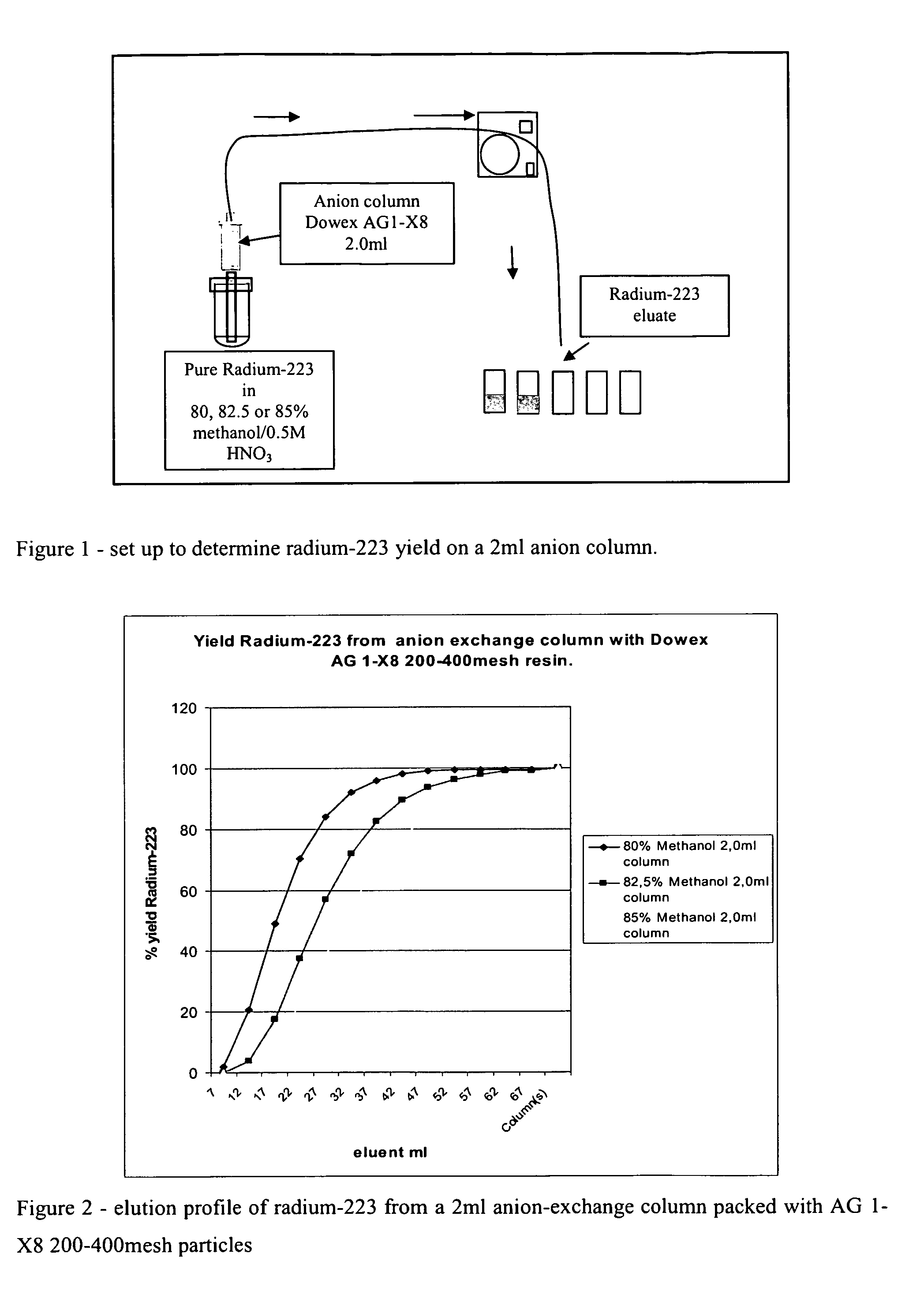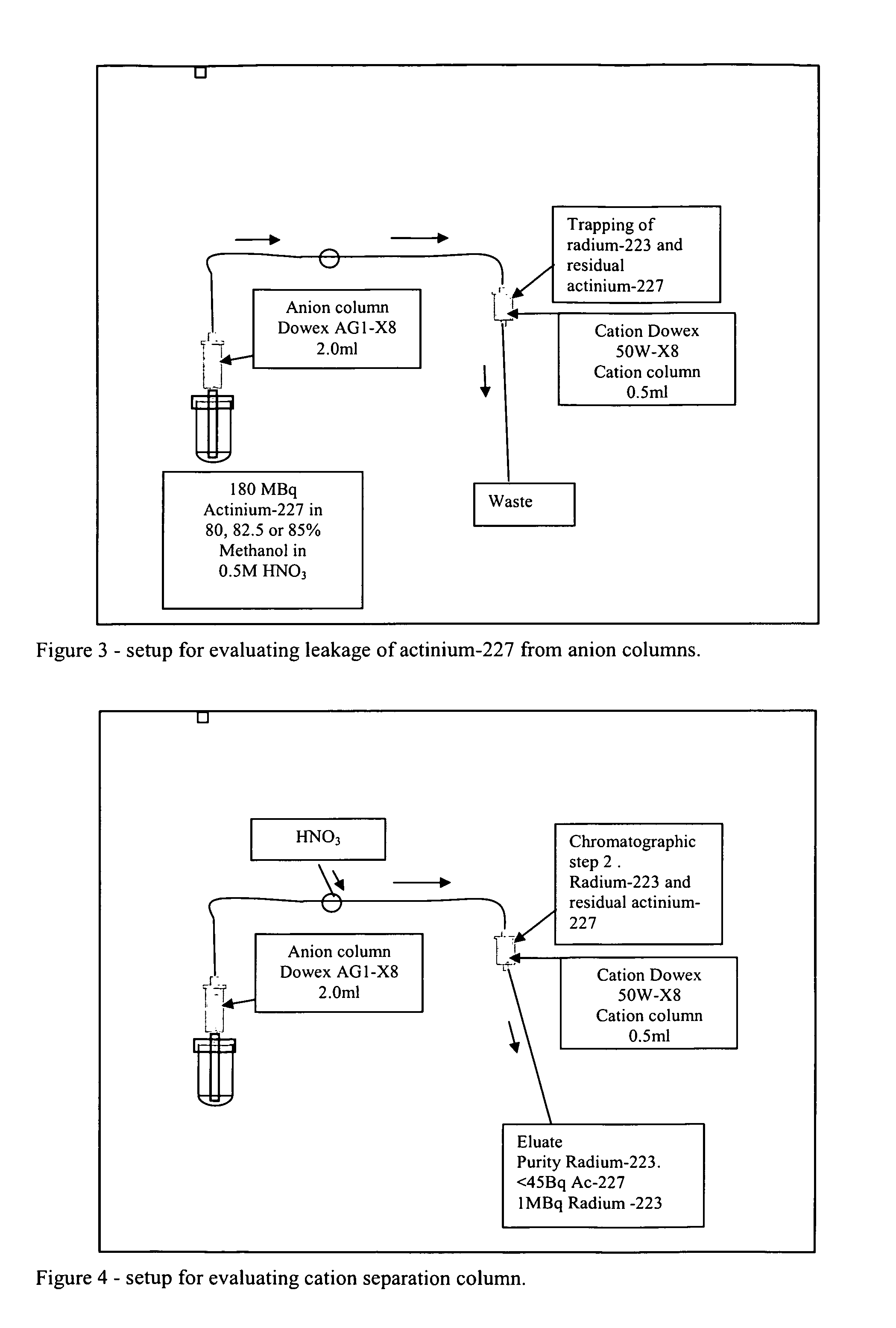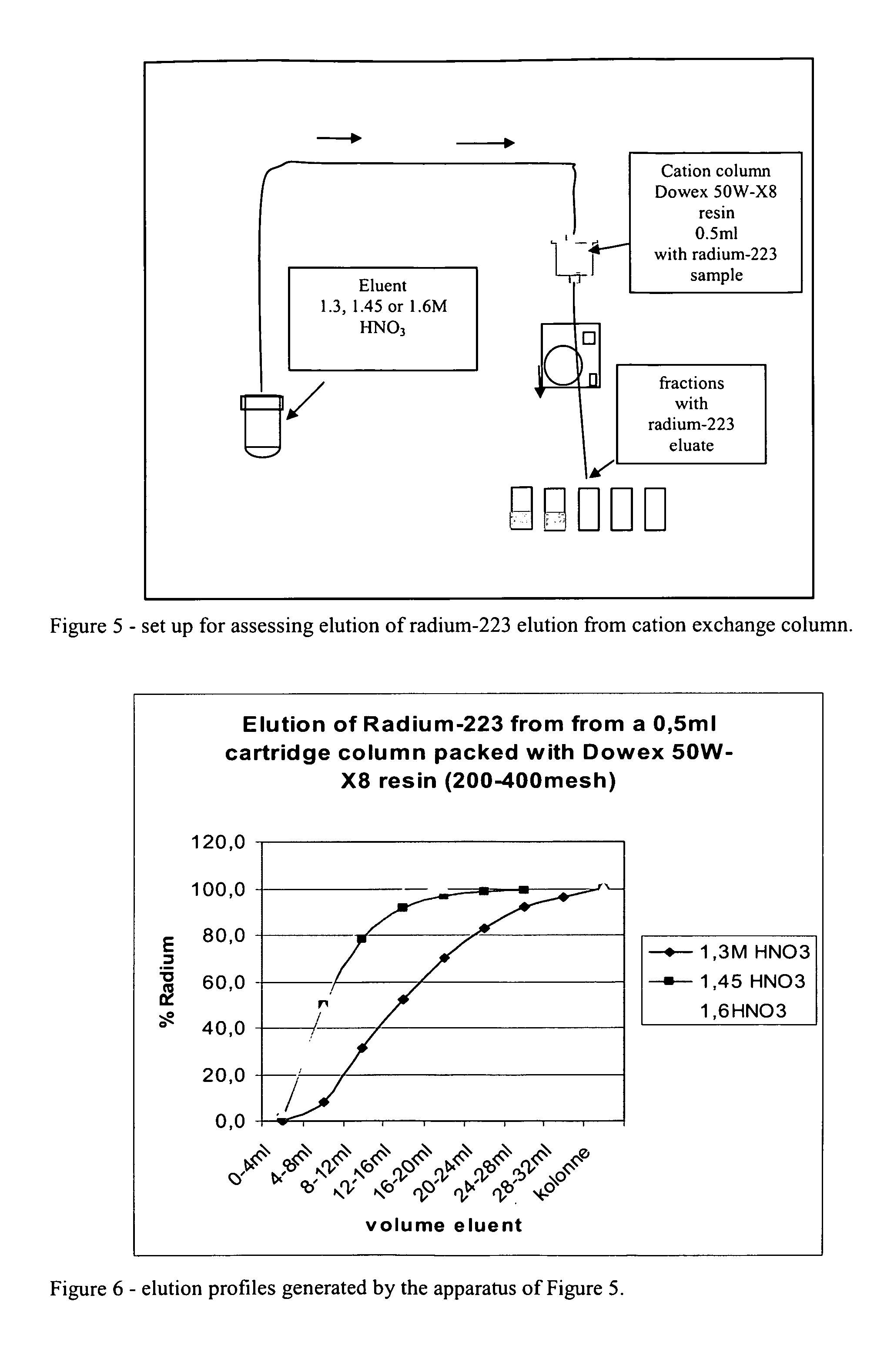Isotope preparation method
a technology of isotopes and radioactive materials, applied in the field of preparation of radium223, can solve the problems of significant damage, significant toxicity risk for essentially the entire lifetime of any human, and stringent purity requirements, and achieve the effect of high radiochemical purity
- Summary
- Abstract
- Description
- Claims
- Application Information
AI Technical Summary
Benefits of technology
Problems solved by technology
Method used
Image
Examples
example 1
1.1 Radium-223 Yield on Anion Column.
[0113]During development of a radium-223 purification procedure, the yield of radium-223 in the process is an important issue. To be able to determine the amount of solution one must use to obtain high yield of radium-223, pure radium-223 was loaded onto 2.0 ml cartridge column packed with Dowex 1-X8 200-400 mesh anion particles.
[0114]The radium-223 was eluted from three different columns with 80, 82.5 and 85% methanol respectively. The concentration of HNO3 was 0.5M in all three experiments. The volume needed to obtain around 95% yield of radium-223 in this chromatographic step was determined.
[0115]FIG. 1 shows a suitable experimental set up to determine radium-223 yield on a 2 ml anion column packed with Dowex AG1-X8 200-400 mesh particles. All radium-223 was diluted in 2 ml of eluent and loaded onto column. The column was then washed with the same methanol / HNO3 solution.
[0116]FIG. 2 shows the elution profile of radium-223 ...
example 2
Cation Exchange Column
[0130]The main purpose of this chromatographic step is:[0131]Trap radium-223 from chromatographic step 1.[0132]Remove most of the methanol used in the first separation step.[0133]Further purification / polishing of radium-223 from actinium-227.
[0134]It has been shown in the development of the present process that suitable cation exchange columns can binds radium-223 when the molarity of acid is in the range 1M or lower. Dowex 50W-X8 cation exchange media shows in addition increased affinity for radium-223 when methanol is present in the eluent.
[0135]During the development of this process it has been verified that the affinity for radium-223 to a suitable cation exchange resin is high. When 60 ml radium-223 eluate is pumped through a 0.5 ml cation column with 85% methanol / 0.5M HNO3 all radium-223 is trapped.
2.2 Removal of Methanol
[0136]Methanol is a class 2 solvent, it is preferable to keep the amount of methanol in drug product as low as...
example 3
Technical Production of Drug Substance from a 2.5 GBq Actinium-227 Source
[0173]After the initial experiments a full scale experiment was set up. The generator was around 2.5 GBq actinium-227. The amount of Radium-223 in the batch at the separation time was estimated to be 1.2 Gbq.
[0174]FIG. 9 shows a full scale experimental setup for drug substance production.
Comments.
[0175]The separation was performed and the result confirmed the expectations. The process produced the drug substance in a quantity of approximately 1100 MBq Radium-223. This corresponds to an overall yield in the process of 92% since the total amount of radium-223 in the generator at separation time was estimated to be 1.2 GBq. The purity was determined to be well within the requirements for pharmaceutical administration and the recovery of the parent isotopes was high, as detailed below.
Measurements with HPGe Detector.
[0176]Table 6 gives level of thorium-227, radium-223 and actinium-227 in the different fractions / col...
PUM
| Property | Measurement | Unit |
|---|---|---|
| diameters | aaaaa | aaaaa |
| energy | aaaaa | aaaaa |
| volume | aaaaa | aaaaa |
Abstract
Description
Claims
Application Information
 Login to View More
Login to View More - R&D
- Intellectual Property
- Life Sciences
- Materials
- Tech Scout
- Unparalleled Data Quality
- Higher Quality Content
- 60% Fewer Hallucinations
Browse by: Latest US Patents, China's latest patents, Technical Efficacy Thesaurus, Application Domain, Technology Topic, Popular Technical Reports.
© 2025 PatSnap. All rights reserved.Legal|Privacy policy|Modern Slavery Act Transparency Statement|Sitemap|About US| Contact US: help@patsnap.com



